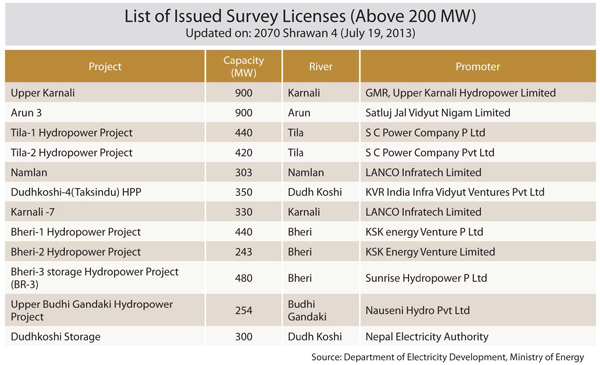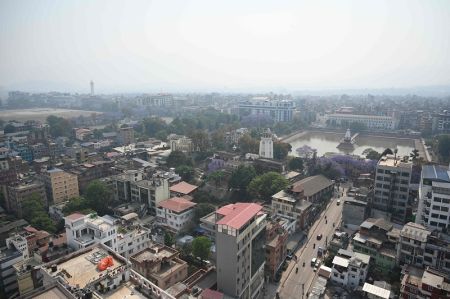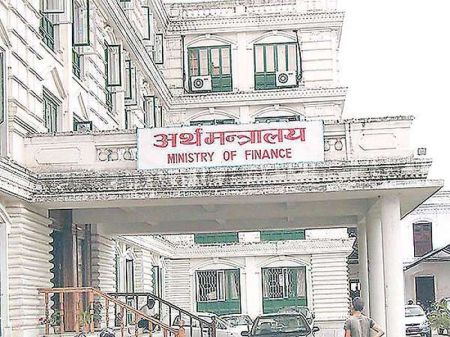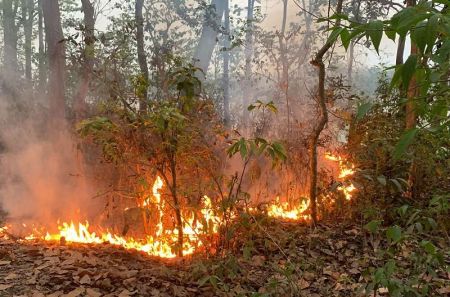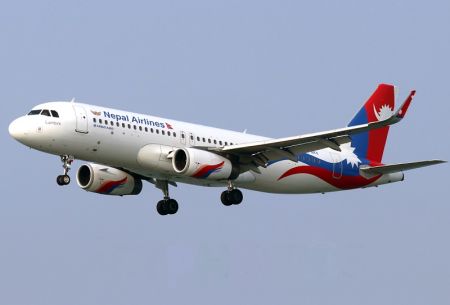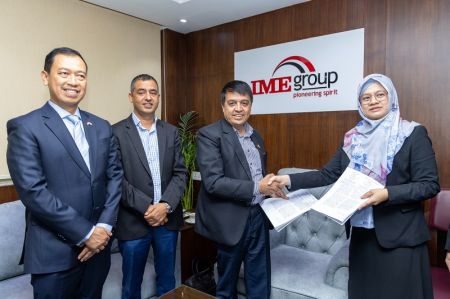--By TC Correspondent
The hydropower promoters of the private sector have designed a template for the Project Development Agreement (PDA) and handed it over to the government. They have said that this draft reflects their concerns. Earlier, the Ministry of Energy had prepared a PDA template a year ago, meant for hydropower projects of below 500 MW capacity. The private sector wants that revised.
“We have submitted a PDA draft by incorporating the concerns of the private sector,” said Dr Subarna Das Shrestha, President of Independent Power Producers’ Association, Nepal (IPPAN). He added, “We hope that the government will incorporate the suggestions of the private sector while finalising the PDA template it is developing on its own.”
Bishwa Prakash Pandit, Secretary at the Ministry of Energy (MoE), while receiving the PDA draft prepared by IPPAN, said, “The PDA draft will be finalised bearing in mind the concerns of the hydropower promoters and national interest.” He further added that the PDA draft will be developed in a manner which will be helpful to attract foreign investment.
Meanwhile, the Investment Board (IB) Nepal said a PDA template is being worked out which will have provisions requiring the hydropower promoters to pay compensation for failing to meet project deadline. The provisions in the PDA template will also require hydropower promoters to give due attention to environmental concerns and provide employment to locals among other things.
Negotiations with Hydropower Developers
While the MoE plans to start PDA negotiations with hydropower developers building projects below 500 MW, the IB has been conducting PDA negotiations with three foreign power developers. Even though the MoE had made a PDA draft for hydropower projects below 500 MW and tried to start negotiations with the concerned hydropower developers, the process was stalled after most of the developers expressed reservations over the PDA draft. The developers had then said that it was not a sound proposition technically as well as financially.
Earlier, two separate PDA templates were prepared to hold negotiations with hydropower developers — one made by the MoE for hydropower projects below 500 MW and the other made by the IB for projects above 500 MW capacity. However, the MoE was instructed to use the PDA template formulated by the IB. The MoE then started to prepare the same PDA template for hydropower projects below 500 MW capacity, confirmed Keshav Dhoj Adhikary, Head of the PDA negotiation committee at the MoE. The PDA negotiation committee formed by the MoE comprises representatives from the Finance Ministry, Ministry of Law and the Nepal Electricity Authority (NEA).
Six Applicants of Below 500 MW
As of the third week of March this year, a total of six hydropower projects with a collective capacity of 1,130 MW had applied to the Department of Electricity Development (DoED) for the PDA. The six projects are namely Middle Bhote Koshi – I (40 MW), Upper Marsyangdi – A (50 MW), Kali Gandaki Gorge (164 MW), Upper Trishuli – A (216 MW), Budhi Gandaki – II (260 MW) and Lower Arun (400 MW).
Of the six PDA applicants, Upper Trishuli – A is the first to pay the PDA fee while submitting the required documents. As per the PDA Procedure 2013, hydropower developers have to pay US$ 1,500 per MW as processing fee to sign the PDA. If the government refuses to sign the agreement even after the payment of the fee, the amount has to be refunded.
The PDA is a vital contract between the government and the investors. The government assures the investors, through the agreement, that it would avert all possible social, economic and policy-level uncertainties during the construction phase of projects. Generally, issues related to taxes, licence period, free energy, royalty, repatriation rights and parties’ obligations are included in the PDA.
PDA for Big Hydro Projects
The secretariat of the Investment Board expedited finalisation of the PDAs for four mega-hydropower projects earlier this year. It was expected to provide a much needed impetus to enable negotiations on four priority projects that have a combined capacity to produce 3000 MW of electricity. The four mega hydro projects are namely Upper Marsyangdi (600 MW), Tamakoshi – III (650 MW), Upper Karnali (900 MW) and Arun – III (900 MW).
NIB, which was established more than a year ago to expedite the implementation of mega-projects including hydropower (above 500 MW) in a fast-track mode, is developing a PDA template with the help of Herbert Smith, a legal advisor based in London.
Uniform PDA for All Projects
As stated earlier, there were two separate PDA templates made by the MoE and the IB to hold negotiations respectively with hydropower developers of below 500 MW and for projects above 500 MW capacity. However, the government later decided to have a uniform PDA template while negotiating with the foreign companies developing hydro power projects of all capacities.
With this decision taken earlier this year, the IB and the MoE planned to negotiate with foreign developers on the basis of a single PDA model. The MoE then said that it will negotiate with foreign developers of less than 500 MW capacity on the basis of the PDA template prepared by the IB. As per the IB Act, hydropower plants with a capacity of 500 MW and above came under the board’s purview.
The ministry said a uniform PDA model was to be brought into effect to prevent any confusion and prejudice while dealing with the various power developers. It concluded that since both the MoE and the IB were dealing with foreign hydro power developers, there was no need for two different models of PDA. It led the MoE to form a committee to synchronise the two PDA templates and begin negotiations with developers which meet the criteria.
It further clarified that despite the PDA template being the same, there might be separate provisions for different projects based on their respective capacity, volume of investment and number of beneficiaries.
It must be noted that after the formation of the IB over one-and-a-half years ago, the government entrusted it with developing large hydropower projects above 500 MW while the MoE was assigned hydropower projects of less than 500 MW capacity.
Experts said that Nepal has an opportunity to bring in US$ 6 billion in foreign direct investment, create new opportunities for Nepali businesses and the Nepali labour force. Taking concrete steps to unlock the country’s vast hydro potential and solve the load shedding problem is expected to address Nepal’s biggest obstacle to investment, business development and economic growth.
